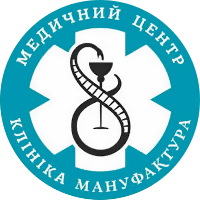
Mammography: what is important to know
What is mammography?
Mammography is the most common, accurate, and most effective way to examine breast health today. The reliability of the results of breast examinations depends on the quality and certified equipment, and on the doctor’s qualifications evaluating the results.
Screening mammogram is indicated for a yearly examination, as it allows to find cancer at the earliest and curable stage, when there is no signs of disease. For example, mammography allows to detect the abnormal tissue’s development two years before the doctor or you yourself can detect these changes manually (with a palpation). X-ray screening is indicated for patients from the so-called risk group:
- Women over 45 years;
- Women of any age who are suspected of having tumors detected during a manual or ultrasound examination;
- Women of any age with the family cancer history (whose mom or granny had/has the breast cancer).
The mammography examination consists of x-rays images, which are called ‘mammograms’ (additionally there are distinguished 3D-digital mammography and ultrasound of the mammary glands). The images of breast tissue are captured in different projections creating a general view of mammary glands. The radiologist interprets the image and reports the results to the patient. Scheduled annual examination using the same mammography facility provides the radiologist a great advantage in comparing the current test results with the previous one, which helps and makes the easiest detection of minor abnormalities that may occur from year to year.
What does the mammogram show?
The screening mammography may show:
- No signs of breast cancer;
- A benign, not cancer condition;
- An abnormal finding that needs follow-up tests to rule out cancer.
What is the difference between screening and diagnostic mammography?
Screening mammography is a survey examination, which allows visualizing the tissues condition and abnormal changes of a tumor nature. Diagnostic mammography is a targeted study of the detected abnormal tissues changes for the distinguish diagnosis and the therapeutic measures evaluation.
Is a mammogram painful?
Usually, mammography does not cause pain, but some women report discomfort during the procedure. The examination itself is performed with clamping the mammary gland between two plates for the imaging. If the pressure is too unpleasant and painful, you can ask the radiologist to change the breast position to ease the discomfort. The breast size, the day of your period, and the radiologist’s experience affect the discomfort volume. For most women, the best time for a painless examination is any day during the first week after the end of a period. If possible, do not plan breast screening in the week before the menstrual period, when the breast is most sensitive to pain.
Do I need a doctor's referral for mammography?
Mammography is included in the mandatory procedures for the annual medical examination of patients at risk (see above), and if you are in this group and are attentive to your health the examination performing at your own decision. It is important to remember that the examination results should be interpreted by an experienced radiologist, and in case of tissues changes in findings, it is required a qualified mammologist consultation. At «Manufactura» clinic all the results of any examination are given to patients and you can consult your doctor, or we can recommend the mammologist for the further clinical examination and observation.
Is the breast x-ray safe?
For now, the patient receives an irradiation level (<0.1 mSv) significantly lower than that one during fluorography. According to the general doctors’ assessment, such a dose is insufficient for the tumor development. Here we use the advanced Planmed Clarity 2D which is performing the mammography in shortest period with the lowest possible doses, so our patients have only a short contact with the lowest dose.
We also always indicate the dose irradiation patient is exposed during our x-ray examinations. So we recommend additionally monitoring the total radiation dose received during the annual or semi-annual examination period if you often underwent x-ray diagnostics during these periods. Note that during preventive x-ray examinations, the annual effective dose to a patient should not exceed 1 mSv, and when the cumulative dose of a patient’s diagnostic exposure reaches more than 100 mSv, further exposure should be limited (source: State Sanitary Rules and Norms "Hygienic requirements for the design and operation of X-ray rooms and X-ray procedures", The Directive of Ministry of Health of Ukraine on June 4, 2007 No 294, with the amendments and supplements on September 22, 2017 No 1126).
Should I specially prepare for breast examination?
No. No preparation is required unless the recommendation to plan the day in accordance with your period for painless examination. But there are some tips that may be helpful to you:
- The procedure requires skin free of deodorants, lotions and creams. You have to wash them off thoroughly or do not use completely in a day before the testing. Remains of talcum powder and some perfume compounds affects into the image and can cause false results.
- Examination is performed out on a naked body. It will be convenient for you if you need take off only the top of your clothes.
- Do not plan a mammogram right before or during menstruation. The breast becomes more sensitive to pain during these periods.
- Take your previous mammography images, if it was not performed at «Manufactura» clinic. It can help the radiologist to see the tissues changes in dynamics. Interpretations of mammograms can be difficult because a normal breast looks different for each woman and some breast cancers are hard to visualize, so the radiologist may want to compare the current image to views from previous examinations in order to in order to avoid any mistakes findings.
- Be sure to report any symptoms and manifestations that are anxious you, and the previous breast diseases or surgeries. It will be very important to know if you have a family cancer history, especially breast cancer.
- Do not limit yourself in food and drink, and do not stop taking the prescribed medications on the day of the examination. None of these affects the results or the procedure of a mammography, but do reflects in your day routine forcing the negative feelings. Do not make anxious conditions for yourself.
Does the breast implants affect the mammography?
Breast implants can impede accurate mammogram readings because both silicone and saline implants are not transparent on x-rays and can block a clear view of the tissues around them, especially if the implant has been placed in front of, rather than beneath, the chest muscles. Experienced radiologists know how to carefully compress the breasts to improve the view without rupturing the implant.
What are the limitations of Mammography?
While mammography is the best screening tool for breast cancer available today, mammograms do not detect all breast cancers. There are so called a ‘false negative result’ when a certain type of cancer did not appear on mammograms, and on other hand a ‘false positive result‘, when some individual differences in the breast density or other tissue changes look abnormal and no cancer is present. Screening mammographic images themselves are often not enough to determine the existence of a benign or malignant disease with certainty. If there are abnormalities, the radiologist may recommend further diagnostic studies. If you feel anxious symptoms, but the mammogram has a “negative” result affirming a healthy tissue, be sure to consult a mammologist regarding other types of diagnostics.
We advise you to be responsible for your health and not disregard a medical examination.
Stay healthy.
Make an appointment
Your name
Phone number
Direction
Desired date
Comment













